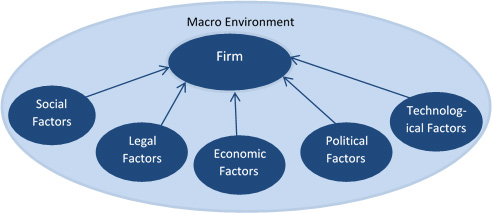- Business Concepts ›
- Marketing and Strategy ›
- SLEPT Analysis
SLEPT Analysis
Definition, Importance, Factors & Example
This article covers meaning & overview of SLEPT Analysis from marketing perspective.
What is meant by SLEPT Analysis?
SLEPT analysis is a framework to assess an organization’s external environmental influence on it. It considers five factors affecting the macro-environment - Social, Legal, Economic, Political and Technological (hence the mnemonic SLEPT).
Importance of SLEPT Analysis
The outcome of SLEPT analysis is an overall picture of the macro environment to identify threats and opportunities that can be used in SWOT analysis. SWOT further adds on the internal factors affecting the organization. SLEPT helps to identify and hence take advantage by maximizing opportunities and minimizing threats. It gives an understanding of the broad and long term trends and makes the firm in a better position for strategic decision making.
Read More
SLEPT Factors
The key external factors which are evaluated under SLEPT analysis are socio-cultural, legal, economic, political & technological.

Each of these factors can be understood as below.
Social Factors
This includes health consciousness, education level, population growth rate, gender distribution, social classes etc. The social behavior, beliefs and perspective of the people of that region defines this external factor.
Legal Factors
This includes laws such as anti-trust law, discrimination law, intellectual property laws, consumer protection laws, employment laws, regulatory mechanism etc. For any multi-national company present in various parts of the world, they need to be within the laws of that country as well as international trade laws.
Economic Factors
This includes growth rates, inflation rates, interest rates, exchange rates, fiscal policies, monetary policies, credit availability etc.
This is important to understand as for any company which has to operate based on financial limitations and factors and earn profit.
Political Factors
This includes government policies and intervention in the economy such as corruption level, government stability, trade control, competition regulation, involvement in Trade Unions, consumer protection laws, employment laws etc.
Technological Factors
This includes technological aspects such as R&D activity, technology incentives, rate of technological change, infrastructure level, access to technology etc. With the growing presence of technology, parameters like internet services, mobile phone penetration in the market etc. are all important factors for businesses to evaluate.
Example of SLEPT Analysis
As an example, let us review the SLEPT analysis for a multi-national restaurant chain brand like McDonald's or Pizza Hut.
a) Socio-cultural: These food brands are spread across all countries and hence has to evaluate local culture, language, beliefs, community perceptions etc. Food preferences like vegetarian, non-vegetarian, spicy or non-spicy etc. are impacted by these factors.
b) Legal: Each restaurant or food chain must abide to the laws of the country, economic laws, labor laws etc. while operating in a specific region.
c) Economic: For a restaurant chain brand, economic factors like currency exchange rate, inflation, disposable income, interest rates etc. are all important factors
d) Political: Political factors is important for food industry depending upon the government rules, ideologies, protests etc. which define what food can be sold.
e) Technological: The technological advancements of a country can impact the food business by factors like internet availability, transportation network etc.
Hence, for any company or business, these external factors are extremely important. If they are in favor of a business, it does well, and if they are against the business, it can lead to severe challenges & obstacles.
Hence, this concludes the definition of SLEPT Analysis along with its overview.
This article has been researched & authored by the Business Concepts Team which comprises of MBA students, management professionals, and industry experts. It has been reviewed & published by the MBA Skool Team. The content on MBA Skool has been created for educational & academic purpose only.
Browse the definition and meaning of more similar terms. The Management Dictionary covers over 1800 business concepts from 5 categories.
Continue Reading:
What is MBA Skool?About Us
MBA Skool is a Knowledge Resource for Management Students, Aspirants & Professionals.
Business Courses
Quizzes & Skills
Quizzes test your expertise in business and Skill tests evaluate your management traits
Related Content
All Business Sections
Write for Us